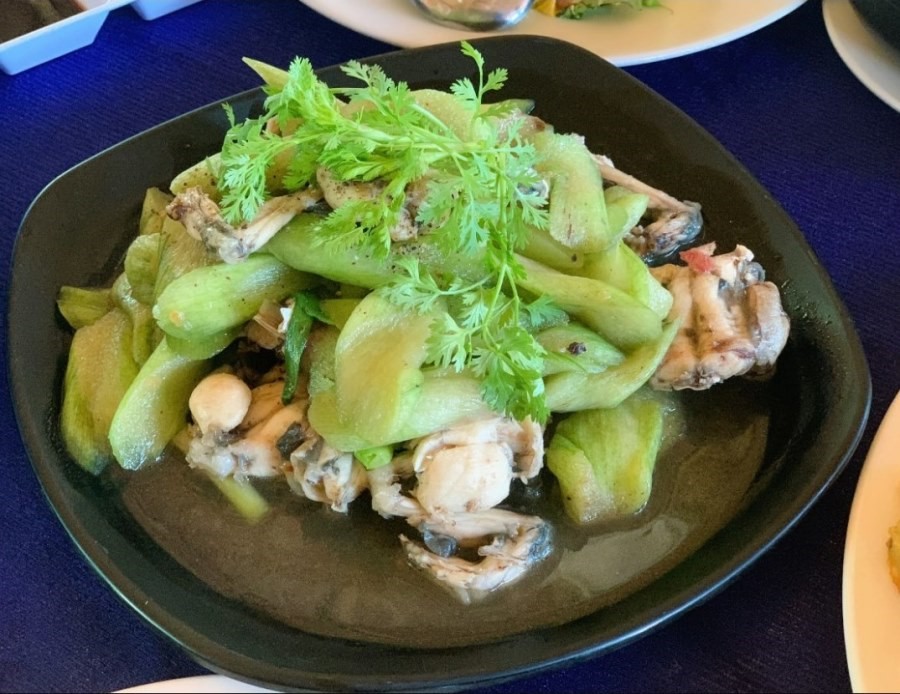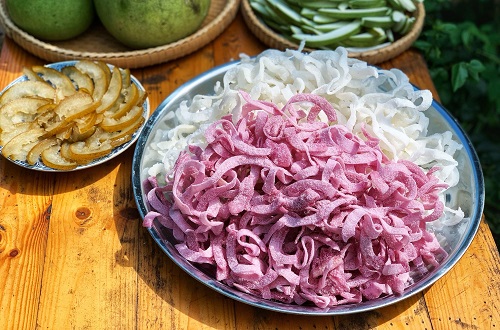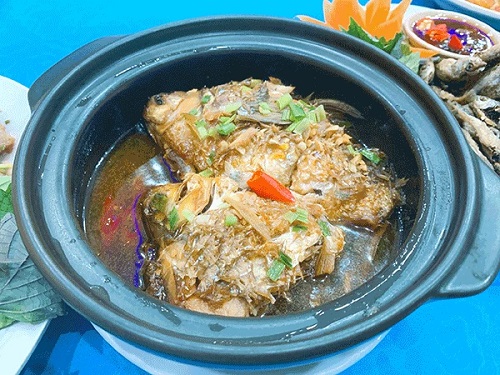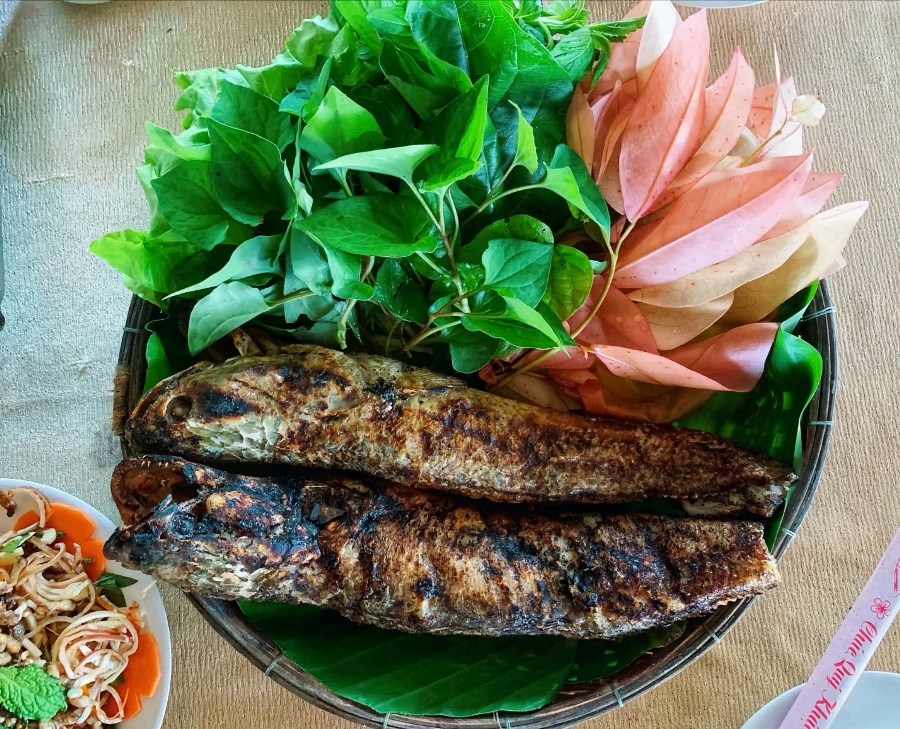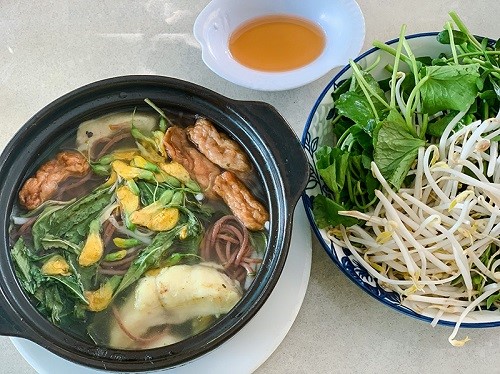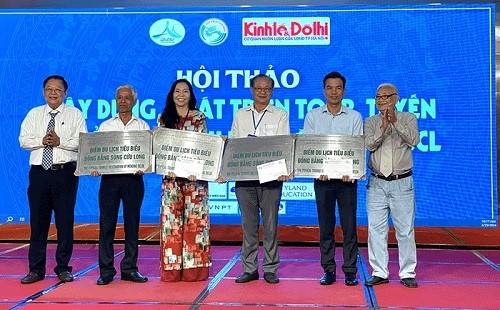
Tuc Dup Hill is a popular tourist destination located in Ninh Hoa hamlet, An Tuc commune, Tri Ton district, An Giang province. Tuc Dup Hill is praised as an “immortal fortress” with realistic and vivid material that recreates the fierce war in movies and is the source of inspiration for poetic composition. Tuc Dup is a courageous symbol of the national liberation struggle, of patriotism and a “sacred hill” of many patriotic spirits who sacrificed for the country.
Today, Tuc Dup has become an eco-tourism destination. The hill stands majestically, storing in it natural treasures such as mountain caves holding clouds, curving streams releasing pearls, and huge cultural and historical treasures. It is also famous for the “National Historical Relic” complex that has long been recognized, honored, preserved, and embellished such as The Provincial Party Hall, C6 Cave, Cave of the Department of Propaganda and Training, the Military Command Cave, the Military Medical Cave, the Women's Cave, the Youth Cave... and the Fairy Cave.
Every year, Tuc Dup eco-tourism destination attracts more than 100,000 visitors throughout the country. Coming here, visitors can see the wild, beautiful scenery with many large, fanciful caves. At the same time, they will be immersed in nostalgia, where they can listen to and contemplate cultural values, and stories about an invaluable historical treasure amid the magnificent mountains...
Tuc Dup is also known as the two-million-dollar hill, what a rich hill, but it is the value of bombs and bullets during the war that the US army has used to resolutely destroy the hill but unsuccessfully. Although the enemy used the most powerful weapons: B52 flying fortress, napalm bombs, solid gasoline, rockets, and the most skilled combat units to surround and destroy Tuc Dup Hill for 128 days and nights, they could not destroy the base. Although thousands of tons of bombs and bullets were used to attack the hill, Vietnamese soldiers with passionate hearts won the enemy. The US Army suffered the loss of approximately 4,700 soldiers, and many of their military vehicles, and aircraft were destroyed. Despite spending an estimated 2 million USD, they were unable to conquer the hill.
Tuc Dup Hill is now a popular historical and cultural tourist destination that offers a variety of services such as cave exploration, rock climbing, visits to historical relics galleries, and sightseeing tours. Visitors can also indulge in the culinary specialties of the region. Tuc Dup Hill has been recognized by the Mekong Delta Tourism Association as a typical tourist destination in the region for many years. After a three-year appraisal survey for re-accreditation, Tuc Dup Hill has now been re-recognized.
My Tho Cruise Port, located in Hoang Sa, Ward 4, My Tho City, Tien Giang, is the largest cruise port in the Mekong Delta region. It has a main wharf of 1,217.8m2, a main terminal of 5,960.08m2, and a riverside park of 4,108.32m2. The total capacity of the port is about 4,000 passengers per day, which includes 6 cruises on the My Tho - Cambodia route per day, 10 high-speed cruises that can accept passengers at the same time, and small tourist boats. My Tho Cruise Port welcomes over 250,000 tourists every year.
Con Ho is a community-based ecotourism destination located in My Hiep hamlet, My Duc commune, Cang Long district, Tra Vinh province. It covers an area of 25 hectares and is home to 21 households with a population of 66 people.
The Co Chien River surrounds Con Ho, making it a unique destination with diverse ecosystem resources, lush orchards, and opportunities for eco-tourism and community-based tourism. Visitors often refer to Con Ho as an “oasis” due to its separate terrain from the mainland. When you visit Con Ho, you will be able to experience a true living space on an island with no electricity, only fruit gardens and hospitable people.
Tourists are offered a variety of products and services at Con Ho, including ingredients from the home garden, traditional wine-making processes, and a unique folk cuisine. The staff, who follow the "homegrown" tourism model, also act as hosts to visitors, creating a warm and welcoming atmosphere. Coming here, you will be impressed by the ancient Western countryside images. Moreover, you can experience many activities, such as canoeing, fishing, and herbal footbaths. You can also enjoy local delicacies, like butterfly pea flower tea, boiled peanuts, eggs covered in clay and grilled with straw, and red-fleshed, green-skinned grapefruit. Grapefruit sweet soup, grapefruit jam, and coconut jam are also available. More than 20 countries and territories around the world have sent tourists to visit, explore, and experience Con Ho's peaceful rhythm of life.
The Museum of Khmer Ethnic Culture in Tra Vinh province covers an area of more than 10,000 square meters, with a construction area of 1,700 square meters. Its construction began in 1992 and was completed in 1996. The museum was inaugurated and opened to the public on November 14, 1997, on the occasion of the Ok-Om-Bok festival of the Khmer ethnic people.
The Museum of Khmer Ethnic Culture in Tra Vinh province comprises of 5 galleries and a Ngo boat display area. It houses numerous artifacts and heritage items that depict the life of the Khmer people. Visitors can come here to explore, study, and learn about the national cultural values of the region.
Every year, the Tra Vinh Khmer Ethnic Culture Museum receives more than 40,000 visitors from both domestic and foreign regions, who come to witness and experience the rich culture and heritage of the Khmer ethnic people.
* * *
The Mekong Delta Tourism Association has recently recognized three new "Typical Tourist Destinations in the Mekong Delta”. With these new additions, the whole region now boasts a total of 56 such destinations. These tourist spots are renowned for their excellent services and products, and as a result, attract a considerable number of tourists.
Source: Can Tho News - Translated by Hoang Dat







